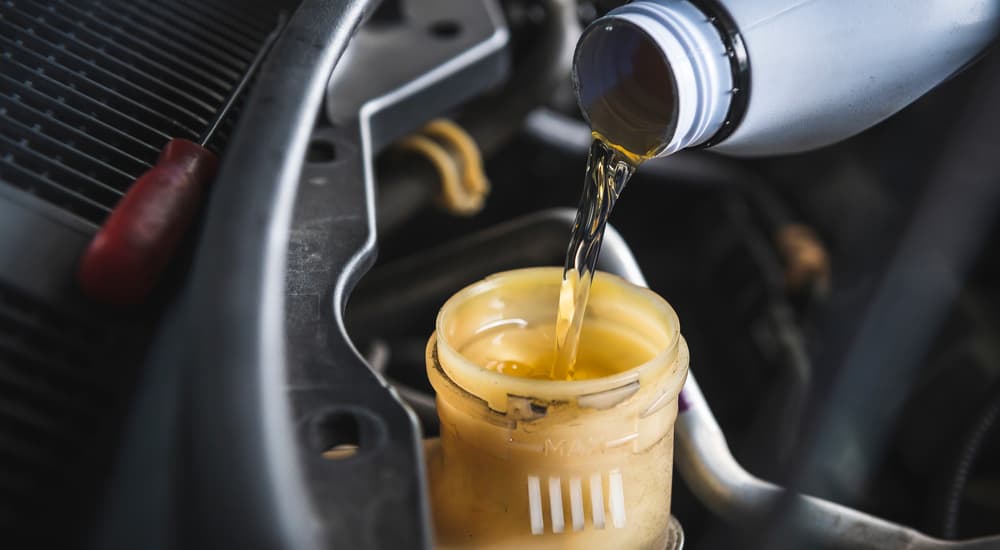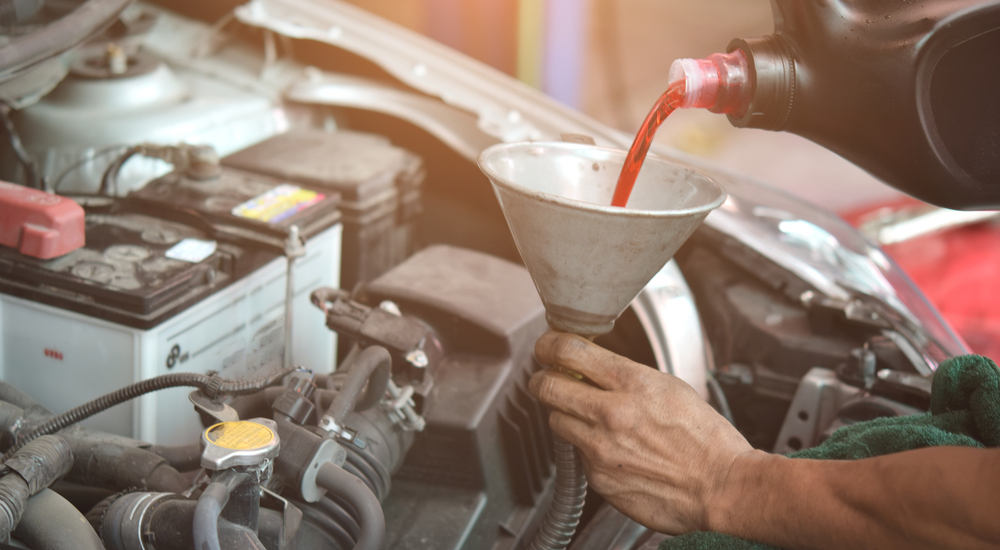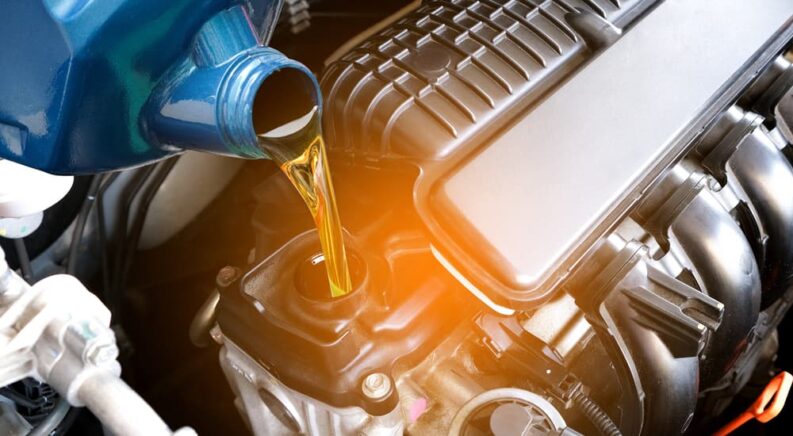SUVs are the most popular vehicles among drivers and have many advantages, such as versatility, safety, and storage. A used SUV is undoubtedly a worthwhile investment that can last thousands of miles and several years if properly maintained.
After digging through the numerous used SUVs for sale, you just returned from the dealership and found one that suits your needs. You already have lofty ambitions and expectations about what you can do next, such as the long-awaited road trip, putting the four-wheel drive to the test, and going off-roading. However, you should do a few things before you break out the GPS and plan that trip. In fact, you should do a few things even before going on a short trip to the grocery store.
Routine maintenance is essential after purchasing any vehicle, whether it’s new or used. Today, we will cover some of the fluids you should have checked and changed after bringing home a used SUV.
Engine Oil
If you’ve ever driven a vehicle or owned one outright, you’re likely familiar with the importance of changing the oil every 5,000 to 10,000 miles. Your engine is a collection of moving parts that produce considerable heat through friction. The oil’s primary purpose is to keep these parts adequately lubricated and remove the deposits that accumulate over time.
When you bring your SUV home, check the oil level and color. While a dealership might have recently given it an oil change, taking it for one is a good idea to make absolutely sure it’s been done. (While at it, get a tire rotation to ensure that the tread is wearing evenly.) Depending on the amount you drive and your activities, you might consider a synthetic blend, as this burns slower and lasts longer than conventional oils.
While some people choose to change their oil themselves, it’s important to remember that this process requires careful handling. Use filters made specifically for your vehicle, and take your old oil to a service center to dispose of it properly.
Engine Coolant
Sometimes referred to as antifreeze, engine coolant is imperative for preventing your SUV from overheating during the summer and freezing up during the winter. Each vehicle is different in terms of the solution you should use.
Having a coolant flush performed at your local service center might be a good idea. This is a procedure where the old fluid is flushed out of the coolant system, allowing you a fresh start with brand-new coolant. It’s important to follow your owner’s manual regarding the type of coolant you use. However, in an emergency such as a hot summer’s day when your vehicle is on the verge of overheating, putting water in the coolant reservoir is a great way to alleviate the problem temporarily. When you return to civilization, be sure to get the coolant flushed to put the right type of fluid back into your cooling system since water can freeze and cause big problems later.
Power Steering Fluid
Power steering is essential for maintaining control over your vehicle. Fortunately, the power steering fluid only needs to be changed every 50,000 to 80,000 miles. Some manufacturers recommend a flush every 40,000 miles. There’s a strong possibility that you might not have to have one performed when you first bring your SUV home. If the fluid is still a shade of white or pink, it’s still in good shape and can be left alone.
If you notice difficulty steering and your power steering fluid looks fine, this could indicate a more significant problem with the steering system itself. Either way, bringing your vehicle to be serviced immediately is your best action.

Brake Fluid
The brakes in your SUV are one of the most critical parts to be mindful of. How frequently your braking fluid should be flushed and changed can depend on various factors. On average, many technicians recommend that you have it changed every two years or 30,000 miles. Here are some circumstances that might warrant getting a change much sooner.
Excessive Heat
If you live in an area known for having high temperatures during the summer months, having the fluid changed once a year can be a tremendous preventative measure in preserving the longevity of your braking system. Similar to your engine, overheating can harm your brakes. If you’re unsure how often you should have this performed, visit your local service center for their advice or consult the owner’s manual.
Ineffective Braking Performance
Your vehicle’s braking system is a collection of different items working in cohesion. If you notice that your brakes aren’t working correctly when you apply pressure to the pedal, this can indicate a problem with the braking system, such as the pads, rotors, or master cylinder.
Burning Smell
One of the significant indications that the brake fluid needs to be changed is if a burning smell emanates from your vehicle every time you brake. This means the fluid is burnt out and must be replaced immediately.
Transmission Fluid
Transmission fluid is one of the more complex items to check and replace. This is something that’s best left to the skilled hands of a trained professional. Transmission fluid has to be checked while the vehicle is on level ground. How often this needs to occur varies based on what type of transmission your SUV has.
If your vehicle has a manual transmission, replacing it every 30,000 to 60,000 miles is usually advisable. This service is required less often in vehicles with automatic transmissions and should be done nearly 60,000 to 100,000 miles.
Used vehicles should have their transmissions serviced at least once a year. If you live in a state that requires a yearly inspection, this is a good benchmark for having your transmission fluid flushed and replaced. If transmission service is neglected, you’ll have problems shifting gears and risk causing irreparable damage to your vehicle. Transmission replacement is among the most costly automobile repairs behind engine rebuilding.

Windshield Washer Fluid
This is one item that can sometimes get neglected by new drivers. Your windshield wipers and the fluid they utilize allow you to maintain visibility during rainy and snowy travel conditions.
The type of fluid that you use is at your discretion. We suggest that if you live in an area with heavy snowfall during winter, you opt for mixtures with chemicals that can melt ice when it’s stuck to the windshield. As with anything you choose to utilize for your used SUV, checking the owner’s manual or consulting a professional opinion will assist you in deciding what works best.
Paying a Little Bit Now, Or a Lot Later
Routine service at regular intervals is how you recoup a return on the investment you’ve just made with a used SUV. Fluids are only part of the larger picture to cover vehicle upkeep and service, but all of these items are essential to prolonging the longevity of your vehicle and ensuring it keeps running.
No matter what kind of SUV you drive, staying on top of fluids is a great way to avoid higher repair bills in the future or even the possibility of your vehicle breaking down completely. Remember to ask for any repair receipts when purchasing a used SUV to ensure that things have been kept up to date.

